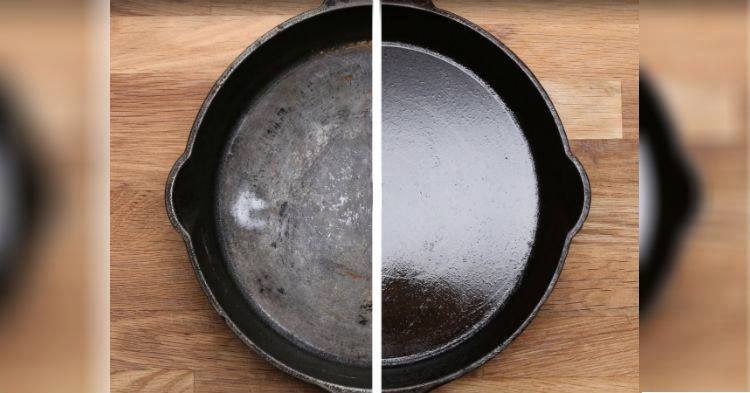If you’re like us, you just love cooking with cast iron. The even heat, the versatility of stovetop to oven cooking, the ability to fry, saute, bake, and more in just one pan…it all makes cast iron the ultimate choice in cookware.
But with all that power comes immense responsibility. And that is where cast iron loses us. The cleaning, care, and seasoning of cast iron skillets is just too much work. Luckily, we’ve discovered this genius video that makes cooking with cast iron a breeze! You have got to check it out.
This brilliant video has been viewed over 1.4 million times, and is helping home cooks take their culinary game to the next level. Here’s what users are saying:
“I’ve been cooking with cast iron for years and these tips are spot on! If you are serious about learning to cook, you need at least 1 good cast iron skillet. Treat it right and it will last forever.”
“Been using my Grandfathers handed down cast Iron forever. I love it. I use it for just about everything and it always cooks meat in a way that no other pan would. So good.”
The most important part of mastering cast iron cooking is knowing what to cook and not to cook in your cast iron pan. We’ve created a quick start guide to knowing when the time is right for cast iron.
What to Cook in Your Cast Iron Pan
Meats that need a hard sear but shouldn’t be scorched, like steak, or roasts that should be browned before braising, perform beautifully in a cast iron.
Stir-fries are another great cast iron option because the pan’s ability to hold heat is similar to that of a wok.
Perfectly golden-brown roasted vegetables with a crunchy exterior crust can be created by dumping your trusty rimmed sheet pan in favor of a large cast iron skillet.
Fried eggs are best cooked up in a cast iron skillet. However, be wary of scrambled eggs and frittatas, which can get gummy and stick to a poorly-seasoned pan.
Cast iron is the perfect vehicle for frying. If you’re frying large or heavy food that has the potential to splatter when added to the oil, reach for a deeper, Dutch oven-style cast iron.
And maybe the best options of all is cornbread. Preheating the pan as the oven comes to temperature will impart a crunchy, golden crust to your cornbread.
What Not to Cook in Your Cast Iron Pan
Delicate pieces of fish are not the best option for a heavy-duty cast iron, especially one that hasn’t been carefully seasoned.
Cast iron takes on the flavors of whatever it’s cooking, so a pan that’s used frequently for savory recipes is not a great vehicle for sweet things and dessert.
Overly acidic foods, such as tomato sauce, can be too harsh for a cast iron pan. Not only will the acidity of the liquid potentially react with exposed metal causing damage to the pan, it can impart a metallic taste to the food.
